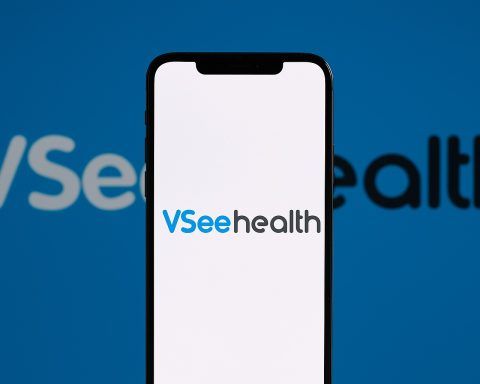- In early June 2025, DispatchHealth and Medically Home completed a merger, forming one of the nation’s largest high-acuity hospital-at-home providers and operating under the DispatchHealth brand, integrating Medically Home’s virtual care technology and 24/7 clinical command centers.
- Teladoc Health signaled a growth and acquisitions pivot under CEO Chuck Divita, after two 2025 deals—Catapult Health (February) and UpLift (May)—to bolster chronic care management and insurance-billed virtual therapy.
- Novo Nordisk terminated its Wegovy distribution deal with Hims & Hers Health in late June 2025 over concerns about unregulated compounded semaglutide, sending Hims & Hers’ stock down about 30%.
- HerMD launched Virtual Care by HerMD on June 2, 2025, enabling menopause- and sexual health-focused telehealth across multiple states.
- Craft Telemedicine officially launched on June 25, 2025, offering a no-subscription platform for specialty care with integrated personalized pharmacy services for compounded medications.
- Health-E Commerce partnered with LifeMD in June 2025 to provide telehealth insomnia evaluations and 50% off FDA-approved sleep medications such as ramelteon, doxepin, or trazodone, delivered after a free online consult and paid with pre-tax funds.
- Mark Cuban’s Cost Plus Drugs teamed with virtual clinic 9amHealth in June 2025 to offer GLP-1 obesity drugs and other cardiometabolic therapies to self-insured employers at fixed monthly prices, including home labs and medication delivery.
- Altera Digital Health announced in late June 2025 the integration of Health Gorilla’s national health information network into Sunrise EHR, enabling seamless data exchange across providers.
- Effective July 1, 2025, the AMA CPT code for Eko Health’s SENSORA AI stethoscope platform took effect as a Category III code with CMS recognition, paving the way for reimbursement of AI-driven cardiac screenings.
- Microsoft unveiled an AI “Agent Orchestrator” for oncology within Azure Health at Build 2025, coordinating multiple AI agents to analyze EHR data, build patient timelines, and assist in cancer staging, reducing administrative burden.
The summer of 2025 brought a surge of activity in digital health and telemedicine. Major telehealth providers announced mergers and strategic shifts, new virtual care platforms launched, and governments advanced telehealth-friendly policies. Below is a comprehensive roundup of key developments, market trends, regulatory updates, and tech advancements shaping the digital health sector in June and July 2025.
Major News & Company Announcements
- Home Care Giants Merge: In early June, in-home care providers DispatchHealth and Medically Home finalized a merger, forming one of the nation’s largest high-acuity hospital-at-home companies [1] [2]. Operating under the DispatchHealth brand, the combined entity offers hospital-level acute care, emergency care at home, and transitional care for post-discharge patients. The merger integrates Medically Home’s virtual care technology and 24/7 clinical command centers into DispatchHealth’s nationwide service, creating a comprehensive platform to deliver complex care in patient homes [3] [4].
- Teladoc’s Growth Strategy:Teladoc Health signaled plans to ramp up growth and acquisitions under CEO Chuck Divita, who marked one year at the helm in June [5] [6]. Speaking at a Goldman Sachs conference, Divita described Teladoc at a “pivot point,” focusing on four themes: expanding integrated whole-person care, leveraging its large mental health footprint (BetterHelp) with insurance coverage, growing internationally, and improving operational efficiency [7]. Teladoc has already made two strategic acquisitions in 2025 – at-home diagnostics firm Catapult Health (Feb) and virtual mental health provider UpLift (May) – to bolster chronic care management and enable insurance-billed virtual therapy [8] [9]. With costs trimmed and a flatter organization in place, Teladoc indicated it is “ready to start making more moves” via M&A to drive both short- and long-term growth [10] [11].
- Weight-Loss Drug Partnership Shifts: The booming demand for GLP-1 weight-loss therapies made headlines. In late June, Hims & Hers Health – a telehealth-powered wellness company – saw its stock plunge ~30% after Novo Nordisk abruptly terminated a deal to distribute Novo’s obesity drug Wegovy via the Hims platform [12]. Novo accused Hims & Hers of promoting unregulated compounded semaglutide “under the false guise of ‘personalization’,” violating laws against mass sales of compounded drugs alongside branded medications [13] [14]. Novo Nordisk insisted it would only partner with telehealth providers that ensure patient safety and stop “illegal sham compounding” of its drug [15]. The breakup, just a month after Novo’s pilot collaboration with Hims, Ro, and LifeMD to expand access to Wegovy, underscored the tensions between digital health startups and pharma over safe prescribing practices [16] [17].
- Women’s Health Telemedicine Expansion: Specialized providers continued to extend their reach via virtual platforms. On June 2, HerMD, a women’s health company focusing on menopause and sexual health, launched “Virtual Care by HerMD,” a dedicated telehealth service to serve patients across its footprint [18]. This enables women in multiple states to access HerMD’s menopause-trained clinicians through online appointments, complementing its brick-and-mortar clinics. The move illustrates how niche providers are blending physical and virtual care to broaden access to expert care for underserved needs in women’s health.
- New Telemedicine Entrants: Startup ventures are also entering the telehealth arena. For example, Craft Telemedicine officially launched on June 25, offering a no-subscription virtual platform for specialty care, including personalized pharmacy services for compounded medications [19]. The Tulsa-based startup aims to give patients more control over specialty treatments by integrating teleconsultations with flexible pharmacy options [20]. Such new entrants highlight ongoing innovation in telemedicine business models catering to specific patient and provider needs.
Product Launches, Partnerships & Innovations
- Virtual Sleep Care via HSAs/FSAs: In June, Health-E Commerce (operator of FSAstore.com and HSAstore.com) expanded its telehealth offerings through a partnership with LifeMD to tackle America’s sleep problems [21] [22]. The collaboration enables consumers with flexible spending or health savings accounts to access virtual insomnia evaluations and 50% off FDA-approved prescription sleep treatments via LifeMD’s telehealth platform [23]. After a free online consultation, eligible patients can get physician-prescribed sleep medications (like ramelteon, doxepin, or trazodone) delivered to their door, all paid with pre-tax health funds [24] [25]. By integrating telemedicine into tax-advantaged health accounts, this initiative makes evidence-based sleep care more affordable and convenient – an important step given the CDC links insufficient sleep to higher risks of obesity, diabetes, heart disease and depression [26].
- Affordable Obesity Care for Employers: Continuing the focus on chronic conditions, Mark Cuban’s Cost Plus Drugs entered a June partnership with virtual clinic 9amHealth to offer affordable weight-loss and diabetes medications to self-insured employers [27]. 9amHealth will leverage Cost Plus Drugs’ low-cost pharmacy model to supply GLP-1 obesity drugs (and other cardiometabolic therapies) at fixed monthly prices for employer health plan members [28] [29]. Enrollees get 9amHealth’s virtual care team (physicians, endocrinologists, coaches), home lab testing, and medication delivery as an integrated service [30]. The program aims to give employers a turnkey way to support obesity and diabetes care “without the massive price tag,” according to 9amHealth’s COO [31]. This partnership exemplifies how telehealth, pharmacy transparency, and care management are converging to tackle expensive chronic diseases.
- Interoperability Boosts: In the health IT arena, a notable interoperability partnership was announced in late June: Altera Digital Health (formerly part of Allscripts) will integrate Health Gorilla’s national health information network into Altera’s Sunrise EHR platform [32]. This strategic integration will enable seamless exchange of patient data across providers using Sunrise, leveraging Health Gorilla’s vast network for clinical data interoperability. Such collaborations are crucial to breaking down data silos between telehealth services and brick-and-mortar systems, ensuring that virtual visits and in-person care share the same patient information for better continuity of care.
- AI-Powered Diagnostics Gain Codes: A milestone in digital diagnostics occurred on July 1, 2025, when a new AMA CPT code for Eko Health’s AI stethoscope platform took effect [33]. Eko’s SENSORA™ platform, which uses AI to detect heart disease from heart sounds, received a Category III CPT code – a critical step toward reimbursement for AI-enabled cardiac analysis [34] [35]. With CMS recognizing this code, clinicians can begin to use and bill for AI-driven cardiac screenings in practice. This regulatory win for Eko signals broader acceptance of AI in clinical workflows and paves the way for scaling AI-powered remote monitoring tools in telehealth.
- AI in Care Coordination: Major tech companies are also advancing healthcare AI. Microsoft, for example, unveiled a new AI “Agent Orchestrator” for oncology care in its Azure Health suite [36]. Announced at Build 2025, this tool coordinates multiple AI agents to work in concert on complex tasks – essentially serving as a “controller” directing various specialized AI models [37]. In cancer care, Microsoft’s orchestrator can collate and analyze complex EHR data, build chronological patient timelines, and even help determine cancer staging [38]. By streamlining data-heavy coordination tasks, such AI orchestration promises to reduce administrative burden for providers and enhance cross-system interoperability in care delivery [39]. It exemplifies how AI innovations are being applied to improve telemedicine and care management behind the scenes.
- Motion-Capture Rehab at Home: Digital health companies continued to roll out innovative remote care technologies. Medbridge, for instance, expanded its AI-powered motion-capture platform for musculoskeletal (MSK) rehab [40]. With over 120 million Americans suffering MSK conditions – and only ~40% completing in-clinic physical therapy – Medbridge’s Pathways platform offers AI-guided therapeutic exercises patients can do via their laptop or phone at home [41]. Using the device camera and proprietary algorithms, it tracks patients’ movements, counts exercise reps, and assesses form in real time [42]. The system then shares these metrics with clinicians, enabling remote monitoring of progress and adaptive coaching or care plan adjustments as needed [43] [44]. Such AI motion-capture tech addresses poor adherence in rehab and represents a practical fusion of wearables/vision AI with telehealth to improve outcomes in at-home care.
- At-Home Cancer Screening: Regulators gave a green light to an at-home diagnostic that could expand telehealth’s reach. The FDA in late May approved Teal Health’s “Teal Wand,” the first at-home cervical cancer screening self-collection device for women ages 25–65 [45]. The prescription device, which began shipping in California in June, lets women collect their own sample and use a telehealth service for cervical cancer screening – offering a more convenient, private alternative to in-clinic exams [46]. This approval was hailed as a major digital health win in women’s health (a space often plagued by gaps in access and adherence). It underscores how telemedicine paired with remote diagnostics can boost preventive care by meeting patients where they are.
Market Trends & Investments
- Telehealth Market Growth: The global telehealth and telemedicine market is on a strong growth trajectory. In June, a MarketsandMarkets report projected the market will grow from $94.1 billion in 2024 to about $180.9 billion by 2030, an 11.5% compound annual growth rate [47]. Key drivers include aging populations and rising chronic disease prevalence, provider shortages (especially in rural/underserved areas), and expanded use of remote patient monitoring – all boosting demand for virtual care [48]. Analysts noted that government initiatives funding telehealth infrastructure and tech-healthcare partnerships are further catalyzing market expansion [49]. However, the report cautioned that inconsistent regulations and provider reluctance to adopt new tech remain challenges that could temper growth [50]. Notably, software platforms (telehealth apps, EHR integrations, etc.) are expected to capture the largest segment of this market, reflecting healthcare’s digital transformation and need for scalable virtual care tools [51].
- Funding and M&A Climate: Investor interest in digital health stayed resilient through mid-2025. After a pullback in 2022–2024, many startups now see 2025 as a pivotal time to scale or consolidate. Surveys of digital health executives show that 79% of companies plan to seek new investment in the next 12 months [52] [53], and about 44% of industry leaders expect telehealth to see the most M&A activity of any digital health segment in the year ahead [54] [55]. Telehealth was cited as both one of the most promising areas for growth (50% of leaders ranked it #1) and, conversely, an area some see as saturated – underscoring a bifurcation where the best-positioned virtual care players are likely to thrive and expand via acquisitions [56]. Indeed, the first half of 2025 already saw notable deals (e.g. Teladoc’s above-mentioned acquisitions, the Dispatch–Medically Home merger, etc.), and this consolidation trend looks to continue as firms seek scale and integrated offerings.
- Notable Investments: While mega-rounds were less common than in the 2020–21 boom, targeted investments continued in June–July. For example, WellTheory, a virtual care startup for autoimmune disease management, raised $5 million in June to accelerate development of its AI-driven care platform [57]. The company is rolling out AI tools like “Care Hub” (a command center that aggregates labs and member data, automates compliance checks, and streamlines provider workflows) and “Care Scribe” (an AI that drafts clinical notes and personalized care plans) to support clinicians [58]. The fresh funding will help WellTheory integrate these tools into employer and health plan offerings [59] [60]. Such investments in AI-enabled care coordination reflect a broader trend: digital health startups are leveraging AI to differentiate their services and attract capital, even as overall funding levels stabilize.
- Market Entrance of Retail & Tech Giants: The period saw continued blurring of lines between traditional healthcare and consumer tech/retail. At HLTH Europe 2025 (a major health innovation conference held in Amsterdam, June 16–19), leaders highlighted “Big Tech’s” expanding role in care delivery [61] [62]. For instance, Amazon Pharmacy’s director noted that by end of 2025, nearly half of U.S. Amazon Prime members will have access to free same-day medication delivery, as Amazon reimagines pharmacy with 24/7 service and transparent pricing [63]. Google’s Chief Health Officer emphasized an “inclusive, principled approach to AI” aimed at empowering consumers to manage health in partnership with providers [64]. Meanwhile, startups and retail health players are forging partnerships that create “horizontally integrated” health experiences – linking daily services, data, and care journeys in a more holistic ecosystem [65] [66]. This trend suggests that non-traditional entrants (tech firms, pharmacies, retail clinics) are increasingly important in the telehealth and digital health market, driving both innovation and competition.
Policy & Regulatory Updates
- U.S. Telehealth Coverage Permanence: A significant win for telehealth access came on Capitol Hill in late June. The U.S. Senate’s draft of a large reconciliation bill included a provision to permanently allow pre-deductible telehealth coverage for High-Deductible Health Plans (HDHPs) paired with HSAs [67]. This would reinstate the COVID-era flexibility (expired Dec 2024) that let HDHP insurance plans cover telehealth visits without the patient first meeting their deductible [68]. ATA Action, the telehealth industry’s advocacy arm, praised the Senate’s move as “a meaningful demonstration” of commitment to virtual care, noting it could immediately enable millions of American workers to access telehealth services with no out-of-pocket cost before deductible, without jeopardizing their HSA eligibility [69] [70]. Telehealth advocates urged swift passage, as this provision – originally introduced by Congress in 2020’s CARES Act – had bipartisan support and was viewed as critical to avoiding a telehealth “benefit cliff” for employer plans [71] [72]. (As of early July, the Senate was poised to vote on the package, which would then require House approval and President Trump’s signature [73].)
- Medicare & Pandemic-Era Extensions: Federal health agencies also continued to navigate the transition out of pandemic-era telehealth waivers. CMS had previously extended Medicare’s telehealth reimbursement flexibilities (originating site expansion, allowing home-based and rural telehealth, etc.) through September 30, 2025, as authorized by Congress [74] [75]. This ensures Medicare patients can keep accessing telehealth (including at-home services and from Federally Qualified Health Centers/Rural Health Clinics) throughout the 2025 fiscal year. However, other temporary provisions lapsed at 2024’s end – notably the HDHP first-dollar coverage (addressed by the Senate fix above) and certain telehealth coverage of physical/occupational therapy in the home [76]. The regulatory uncertainty about what happens after the next expiration date remains a concern for providers and investors [77] [78]. Industry experts like ATA’s Kyle Zebley warn that without permanent federal policy, telehealth’s growth could be “hobbled” by confusion and caution in long-term investments [79] [80]. Many states have stepped in with their own laws (43 states have telehealth coverage parity mandates, and 41 states joined the Interstate Medical Licensure Compact to ease cross-state practice) [81] [82], but the patchwork nature of state rules continues to pose compliance challenges for multistate telehealth providers. Resolving these policy uncertainties at the federal level is seen as key to sustaining telehealth momentum beyond 2025.
- Public Health Input on Tech: U.S. health authorities also sought fresh ideas on leveraging technology for population health. In early June, the Centers for Medicare & Medicaid Services (CMS) issued a Request for Information titled “Make America Healthy Again”, inviting public input (through June 16) on ways digital tools could improve health outcomes and care delivery [83]. CMS specifically asked for suggestions on breaking down data exchange barriers, reducing administrative burdens, advancing value-based care, and strengthening interoperability among healthcare systems [84]. This initiative reflects the government’s recognition that achieving better health at lower cost will require modernizing infrastructure and integrating innovations like telehealth, health data exchanges, and remote monitoring. By seeking perspectives from tech developers, providers, patients, and payers, CMS signaled an openness to inform future regulations or programs that support digital health transformation.
- Global Digital Health Governance: Internationally, WHO continued efforts to guide digital health strategy. In July (14–18, 2025), WHO hosted the 2nd Global Initiative on Digital Health Convening (virtually), bringing together stakeholders worldwide to share best practices and build consensus on digital health governance [85]. Topics include standardizing health data interoperability, AI ethics in healthcare, and strategies to “build back better” using digital innovations post-pandemic [86]. As telemedicine adoption has accelerated globally, such forums aim to align countries on frameworks for privacy, equity, and quality in digital health – ensuring advances in telehealth benefit all populations.
Industry Outlook & Expert Commentary
- AI Moves From Hype to Mainstream: A clear consensus in mid-2025 is that AI in healthcare has shifted from buzzword to real-world value. At HLTH Europe, the atmosphere was “charged with urgency and optimism” about tech’s role in fixing systemic issues like workforce shortages and rising costs [87] [88]. Leaders argued that AI’s impact on healthcare “will be bigger than the internet”, transforming business models toward outcomes-focused care [89]. Rather than tech for tech’s sake, discussions centered on how AI can create tangible value: automating drudge work, enhancing decision support, and uncovering insights from complex health data [90] [91]. A striking data point: 85% of physicians believe AI can improve the quality of care, yet only 12% have received formal training in AI [92]. This gap between AI’s promise and providers’ preparedness is a challenge the industry must address through education and trust-building. Experts noted that conversations have moved past “whether” to use AI, and onto “how” to deploy it responsibly – focusing on use-cases in diagnostics, workflow automation, and patient engagement that demonstrably improve outcomes [93] [94].
- Collaboration & Ecosystems: Another prominent theme is that healthcare’s problems can’t be solved in silos. Collaboration across sectors – pharma, tech companies, providers, payers, government – is “no longer optional, it’s a strategic imperative,” as one HLTH panelist put it [95]. New hybrid models are emerging: partnerships that break traditional boundaries (e.g. hospital systems teaming with startup innovators, or pharma working with tech firms on patient support tools) [96]. Startups showcased at conferences are proving that improving affordability, access, and personalization at scale is possible by combining strengths across the ecosystem [97] [98]. For example, pharma companies are learning from consumer tech to engage patients, while tech giants are adapting to healthcare’s regulations and evidence standards [99] [100]. The consensus is that the future of digital health lies in interoperable, data-driven ecosystems rather than isolated apps or devices [101] [102]. Achieving this requires not just technical integration but also aligning incentives and policies – something governments like the Netherlands have championed by setting national goals and enabling public-private data collaboration [103].
- Preventive & Value-Based Focus: Industry leaders also highlighted a shift from “sick care” to prevention and wellness – areas where digital health can excel. Currently, ~90% of healthcare costs go toward the last two years of life; to bend the cost curve, the focus must move upstream [104]. Telehealth and remote monitoring enable continuous care that keeps people healthier and catches issues earlier. There’s a push to integrate services like nutrition support, mental health, and lifestyle coaching into telemedicine offerings (e.g. “food as medicine” programs delivered via telehealth, or behavioral health apps monitoring daily patterns) [105] [106]. In fact, ATA Action in June launched a Virtual Foodcare Coalition to promote coverage of nutrition and food security interventions delivered through telehealth [107]. Such developments echo a broader trend: digital health tools are increasingly targeting social determinants of health and preventive care, aligning with value-based care models that reward outcomes. If reimbursement models evolve to support this (as advocacy groups are urging), telemedicine could become a primary vehicle for preventive services that keep patients out of hospitals.
- Expert Forecasts: Looking ahead, experts foresee a convergence of telehealth modalities into more seamless patient experiences. Hybrid care models – where patients might see their doctor in person occasionally but use virtual check-ins, remote monitoring devices, and AI triage in between – are expected to become the norm. Generative AI in particular is viewed as a game changer for clinician productivity, automating documentation and providing decision support in real time [108] [109]. However, there is caution that policy must catch up: enduring reimbursement frameworks, licensure compacts, and privacy protections are needed to fully unlock telehealth’s potential. The remainder of 2025 will be crucial as the U.S. inches toward a post-public-health-emergency regulatory regime for telehealth. Globally, continued knowledge sharing and standards development (through forums like the WHO’s digital health initiative) will influence how quickly countries adopt telemedicine at scale.
Despite some uncertainty, the overall industry sentiment is optimistic. As one industry report noted, 81% of digital health leaders entered 2025 with an optimistic outlook [110], having weathered funding dips and proved the resilience of virtual care models. Telehealth usage remains far above pre-pandemic levels, and both patients and providers have grown accustomed to its convenience. With significant investments, policy tailwinds, and technology breakthroughs all underway, digital health is poised to continue its rapid evolution through 2025 and beyond – delivering care that is more accessible, data-driven, and patient-centered than ever before.
Sources: Recent industry news and reports, including Fierce Healthcare [111] [112], American Telemedicine Association (ATA) releases [113] [114], GlobeNewswire market forecasts [115] [116], OpenLoop Health blog [117] [118], HLTH Europe 2025 insights [119] [120], and press releases from healthcare companies and government agencies (June–July 2025).
References
1. www.fiercehealthcare.com, 2. www.fiercehealthcare.com, 3. www.fiercehealthcare.com, 4. www.fiercehealthcare.com, 5. www.fiercehealthcare.com, 6. www.fiercehealthcare.com, 7. www.fiercehealthcare.com, 8. www.fiercehealthcare.com, 9. www.fiercehealthcare.com, 10. www.fiercehealthcare.com, 11. www.fiercehealthcare.com, 12. www.fiercehealthcare.com, 13. www.fiercehealthcare.com, 14. www.fiercehealthcare.com, 15. www.fiercehealthcare.com, 16. www.fiercehealthcare.com, 17. www.fiercehealthcare.com, 18. hitconsultant.net, 19. www.morningstar.com, 20. www.techdogs.com, 21. www.health-ecommerce.com, 22. www.health-ecommerce.com, 23. www.health-ecommerce.com, 24. www.health-ecommerce.com, 25. www.health-ecommerce.com, 26. www.health-ecommerce.com, 27. www.fiercehealthcare.com, 28. www.fiercehealthcare.com, 29. www.fiercehealthcare.com, 30. www.fiercehealthcare.com, 31. www.fiercehealthcare.com, 32. www.alterahealth.com, 33. sfbn.org, 34. cardiologyinnovation.com, 35. hitconsultant.net, 36. openloophealth.com, 37. openloophealth.com, 38. openloophealth.com, 39. openloophealth.com, 40. openloophealth.com, 41. openloophealth.com, 42. openloophealth.com, 43. openloophealth.com, 44. openloophealth.com, 45. openloophealth.com, 46. openloophealth.com, 47. www.globenewswire.com, 48. www.globenewswire.com, 49. www.globenewswire.com, 50. www.globenewswire.com, 51. www.globenewswire.com, 52. www.fiercehealthcare.com, 53. www.fiercehealthcare.com, 54. www.fiercehealthcare.com, 55. www.fiercehealthcare.com, 56. www.fiercehealthcare.com, 57. openloophealth.com, 58. openloophealth.com, 59. openloophealth.com, 60. openloophealth.com, 61. www.ucb.com, 62. www.ucb.com, 63. www.ucb.com, 64. www.ucb.com, 65. www.ucb.com, 66. www.ucb.com, 67. www.americantelemed.org, 68. www.americantelemed.org, 69. www.americantelemed.org, 70. www.americantelemed.org, 71. www.americantelemed.org, 72. www.americantelemed.org, 73. www.americantelemed.org, 74. chghealthcare.com, 75. chghealthcare.com, 76. chghealthcare.com, 77. chghealthcare.com, 78. chghealthcare.com, 79. chghealthcare.com, 80. chghealthcare.com, 81. chghealthcare.com, 82. chghealthcare.com, 83. openloophealth.com, 84. openloophealth.com, 85. www.who.int, 86. www.who.int, 87. www.ucb.com, 88. www.ucb.com, 89. www.ucb.com, 90. www.ucb.com, 91. www.ucb.com, 92. www.ucb.com, 93. www.ucb.com, 94. www.ucb.com, 95. www.ucb.com, 96. www.ucb.com, 97. www.ucb.com, 98. www.ucb.com, 99. www.ucb.com, 100. www.ucb.com, 101. www.ucb.com, 102. www.ucb.com, 103. www.ucb.com, 104. www.ucb.com, 105. chghealthcare.com, 106. chghealthcare.com, 107. chghealthcare.com, 108. chghealthcare.com, 109. chghealthcare.com, 110. www.fiercehealthcare.com, 111. www.fiercehealthcare.com, 112. www.fiercehealthcare.com, 113. www.americantelemed.org, 114. www.americantelemed.org, 115. www.globenewswire.com, 116. www.globenewswire.com, 117. openloophealth.com, 118. openloophealth.com, 119. www.ucb.com, 120. www.ucb.com





